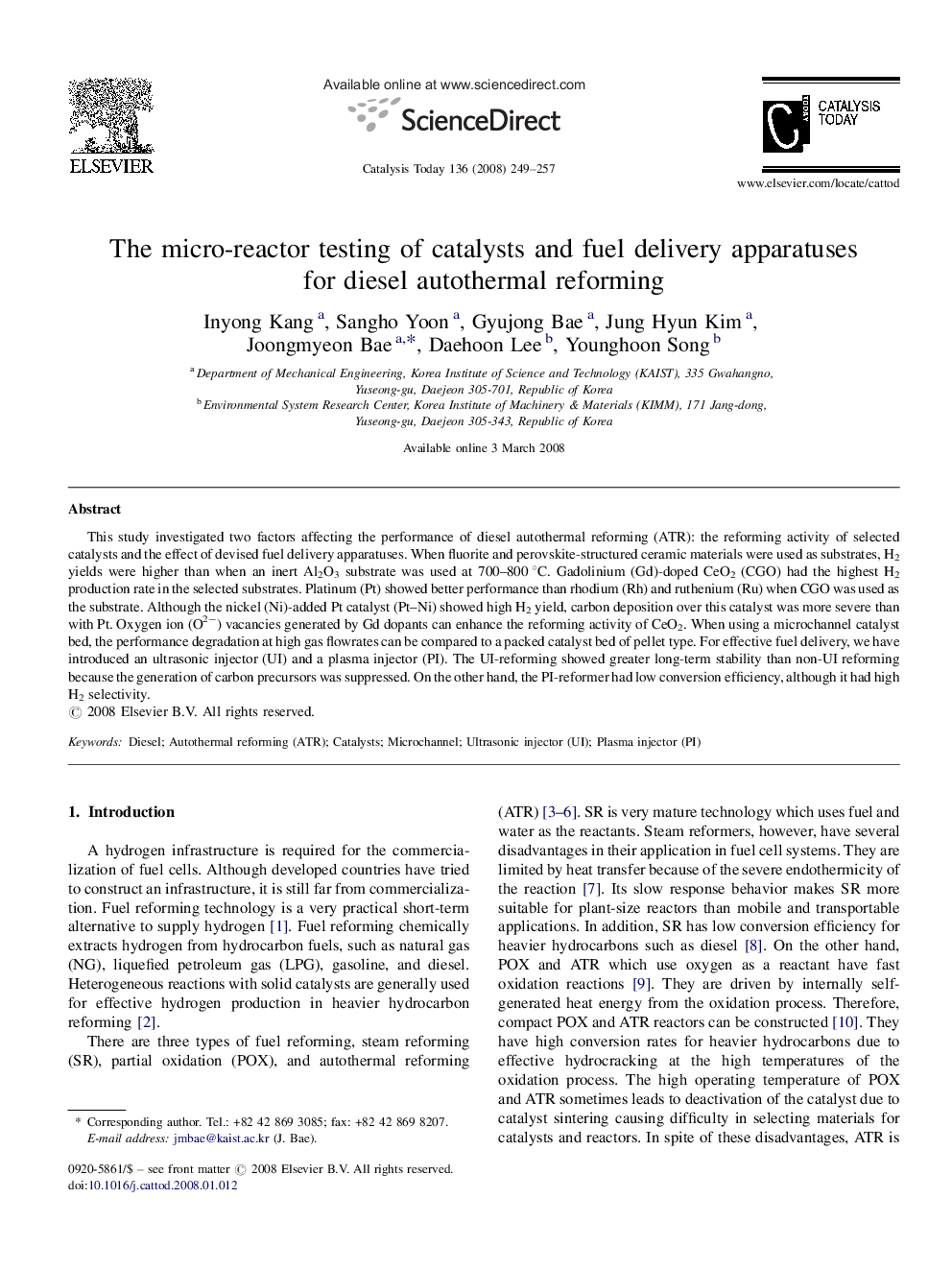| Article ID | Journal | Published Year | Pages | File Type |
|---|---|---|---|---|
| 57993 | Catalysis Today | 2008 | 9 Pages |
This study investigated two factors affecting the performance of diesel autothermal reforming (ATR): the reforming activity of selected catalysts and the effect of devised fuel delivery apparatuses. When fluorite and perovskite-structured ceramic materials were used as substrates, H2 yields were higher than when an inert Al2O3 substrate was used at 700–800 °C. Gadolinium (Gd)-doped CeO2 (CGO) had the highest H2 production rate in the selected substrates. Platinum (Pt) showed better performance than rhodium (Rh) and ruthenium (Ru) when CGO was used as the substrate. Although the nickel (Ni)-added Pt catalyst (Pt–Ni) showed high H2 yield, carbon deposition over this catalyst was more severe than with Pt. Oxygen ion (O2−) vacancies generated by Gd dopants can enhance the reforming activity of CeO2. When using a microchannel catalyst bed, the performance degradation at high gas flowrates can be compared to a packed catalyst bed of pellet type. For effective fuel delivery, we have introduced an ultrasonic injector (UI) and a plasma injector (PI). The UI-reforming showed greater long-term stability than non-UI reforming because the generation of carbon precursors was suppressed. On the other hand, the PI-reformer had low conversion efficiency, although it had high H2 selectivity.
